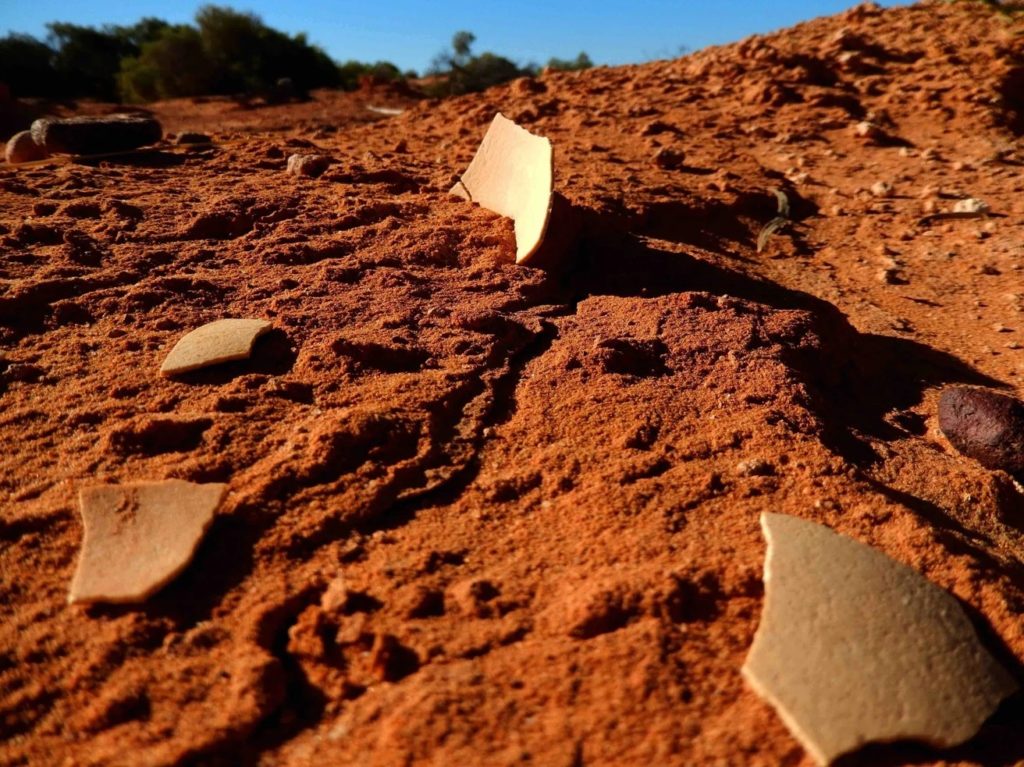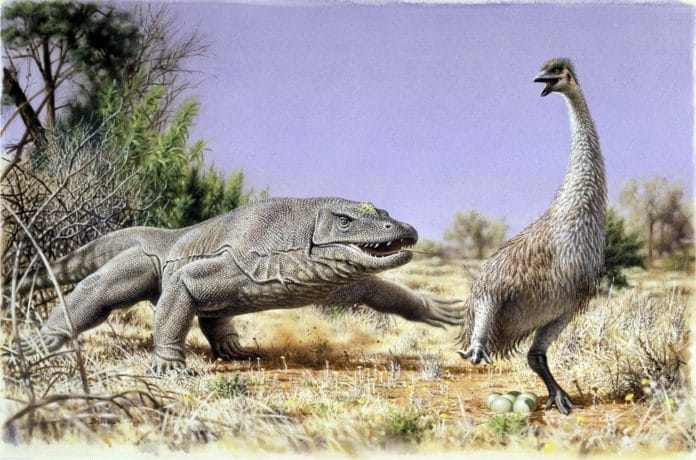Burn markings discovered on old shell scraps some years ago revealed that the early Australians cooked and ate huge eggs laid by a long-extinct bird, igniting a vigorous debate about the species that laid them.
By comparing protein sequences from powdered egg remains to those encoded in the genomes of current avian species, an international team of scientists placed the animal on the evolutionary tree. They found that a huge flightless “mihirung” or ‘Thunder Bird’- called Genyornis, laid huge eggs- almost of melon size- weighing around 1.5 kg.
Based on fossil records, scientists suggest that the Genyornis stood over two metres tall and weighed between 220-240 kilograms/. The creatures had tiny wings and massive legs. They used to roam prehistoric Australia, possibly in flocks. It was among the Australian “mega-fauna” to vanish a few thousand years after humans arrived, suggesting people played a role in its extinction.
Senior co-author Prof Matthew Collins from the University of Cambridge‘s Department of Archaeology said, “Time, temperature, and the chemistry of a fossil all dictate how much information we can glean.”

“Eggshells are made of mineral crystals that can tightly trap some proteins, preserving this biological data in the harshest of environments – potentially for millions of years.”
Humans first arrived in Australia 65,000 years ago. Burnt eggshells from the previously unconfirmed species were around 50 to 55 thousand years old. This is not long before Genyornis is thought to have gone extinct.
Senior co-author Prof Gifford Miller from the University of Colorado said, “There is no evidence of Genyornis butchery in the archaeological record. However, eggshell fragments with unique burn patterns consistent with human activity have been found on different continents.”
This indicates that first humans did not essentially hunt for these creatures, but they routinely raided nests and steal their giant eggs for food.
Miller said, “Overexploitation of the eggs by humans may well have contributed to Genyornis extinction.”
While Genyornis was always a contender for the mystery egg-layer, other experts suggested that the Progura or’ giant malleefowl,’ a much smaller extinct bird weighing roughly 5-7 kg and equivalent to a large turkey, was a more likely candidate due to shell shape and thickness.
Scientists collected a different type of biomolecule- protein to end this debate. They compared the sequences in ancient proteins to those of living species using a vast new database of biological material: the Bird 10,000 Genomes (B10K) project.
Study first author Prof Beatrice Demarchi from the University of Turin said, “We found that the bird responsible for the mystery eggs emerged before the galliform lineage, enabling us to rule out the Progura hypothesis. This supports the implication that the eggs eaten by early Australians were laid by Genyornis.”
The eggshell tested for the study was found on an archaeological site of Wood Point in South Australia. Still, Prof Miller has previously shown that similar burnt shells can be found at hundreds of sites on the far western Ningaloo coast.
Journal Reference:
- Beatrice Demarchi, Josefin Stiller, Alicia Grealy, and Gifford Miller. Ancient proteins resolve a controversy over the identity of Genyornis eggshell. DOI: 10.1073/pnas.2109326119
